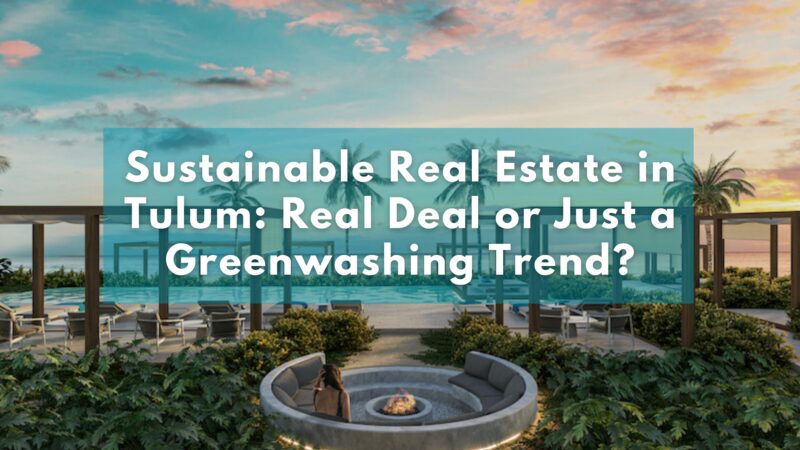
Sustainable Real Estate in Tulum: Is it the Real Deal or Just a Greenwashing Trend?
It seems that sustainability and the eco-real estate is a trend in places like Tulum, Mexico, at the same time, the term has been overused for marketing reasons and there´s a lack of knowledge about the topic which makes the use of the words a trend but not necessarily the real thing.
So, what SUSTAINABLE REAL ESTATE REALLY IS?
It refers to the development, construction, and management of properties that prioritize environmental, social, and economic sustainability. It involves creating buildings and communities that minimize their impact on the environment, promote resource efficiency, and contribute positively to the well-being of residents and the surrounding ecosystem.
The main characteristics of sustainable real estate include:
1. Energy Efficiency:
Utilizing renewable energy sources, energy-efficient appliances, and designs that reduce energy consumption.
2. Water Conservation:
Implementing water-saving technologies, such as low-flow fixtures and rainwater harvesting systems, to minimize water usage.
3. Sustainable Materials:
Using eco-friendly materials, such as recycled or locally sourced materials, that have a lower carbon footprint.
4. Smart Design:
Incorporating smart technologies and green building practices that optimize natural light, ventilation, and overall energy performance.
5. Green Spaces and Biodiversity:
Preserving and enhancing natural areas, promoting biodiversity, and respecting more than creating green spaces within the development.
In a fragile environment like Tulum, sustainability in real estate is crucial for several reasons:
1. Environmental Preservation:
Tulum´s unique ecosystem, including its stunning coastline, cenotes (underground rivers), and tropical forests, must be protected to maintain their natural beauty and ecological balance.
2. Climate Resilience:
Sustainable practices help mitigate the effects of climate change, such as rising sea levels and extreme weather events, making the properties more resilient and reducing vulnerability.
3. Community Well-being:
Sustainable real estate contributes to the well-being of local communities by providing healthier living environments, access to green spaces, and promoting a sense of place and cultural preservation.
4. Tourism and Economic Growth:
Tulum´s economy heavily relies on tourism. By embracing sustainability, the destination attracts environmentally conscious travelers who value responsible tourism practices, thereby fostering long-term economic growth.
By embracing sustainable real estate practices in Tulum, developers, and stakeholders can create a harmonious balance between economic development and environmental preservation, ensuring the long-term viability and resilience of the area for generations to come.
If you care about the planet, we invite you to take the time and ask for advice regarding which are the players and projects who are implementing sustainable real estate practices.



